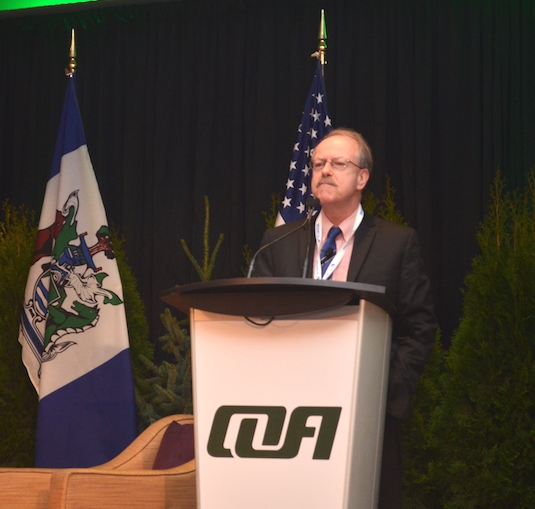
Industry News
Markets
B.C.’s forestry sector competitiveness
April 7, 2016 - Jock Finlayson, executive vice-president and chief policy officer for the BC Business Council discussed the advantages and weaknesses related to B.C.'s forestry sector's competitiveness at COFI 2016 on April 7 in Kelowna, B.C.
Strengths he mentioned included quality of labour; the province’s historical abundance and quality of fibre; an efficient sawmill sector in the B.C. Interior; a supportive tenure system; proximity to large markets, such as U.S., China and Japan; good transportation system and infrastructure; attractive corporate tax rates and government support for industry and market development.
“Market development is an area where the province is well positioned,” Finlayson told the crowd.
Weaknesses related to B.C.’s competitive environment included high labour costs, skill shortages (in some areas); a decline in timber supply due to the mountain pine beetle and other encroachments on forest land base; uncertainty around timber supply and pricing for companies that have made large investments; trends in the U.S. market (including increased investments in U.S. facilities and the SLA); waning global demand for some pulp and paper products; inadequate rail competition; regulatory complexity and related costs; and certain features of B.C. tax policy, including return to PST, carbon tax and the local property tax system.
“Policy makers need to be looking for ways to make our fibre supply and pricing systems as stable and predictable as possible,” Finlayson told the crowd. “Looking out past this election cycle, we’re going to need to have a hard look at new tax incentives to encourage investment in traded industries.”
April 7, 2016 By Andrew Snook
 Jock Finlayson discussed the advantages and weaknesses related to B.C.'s forestry sector's competitiveness at COFI 2016.
Jock Finlayson discussed the advantages and weaknesses related to B.C.'s forestry sector's competitiveness at COFI 2016. Print this page